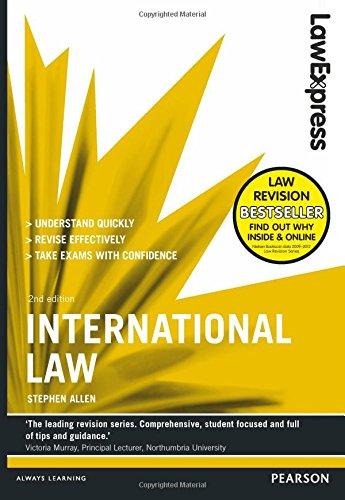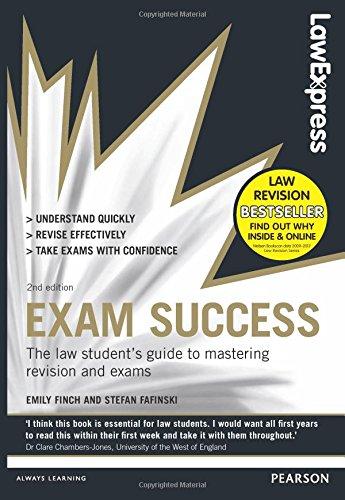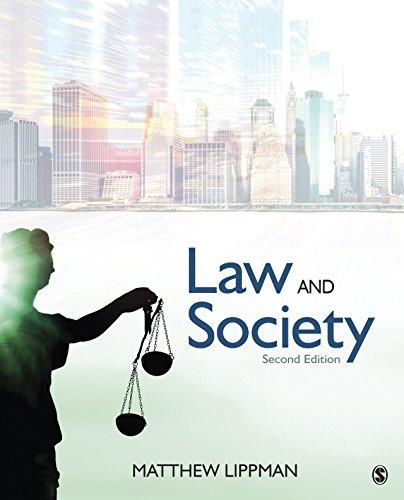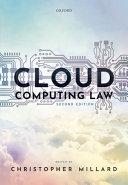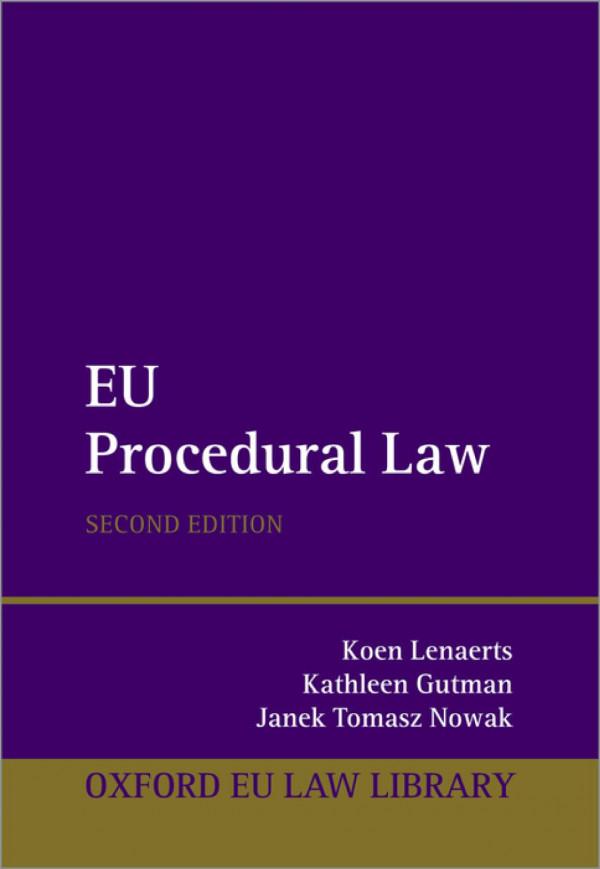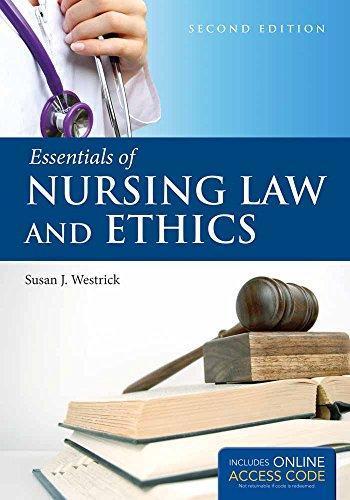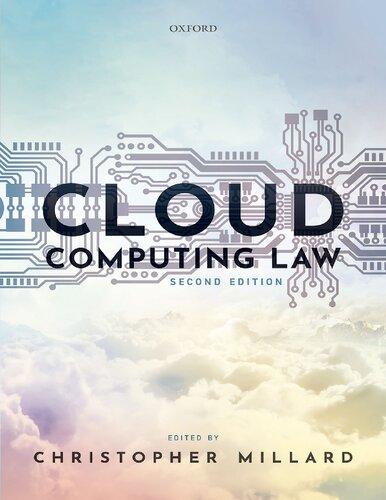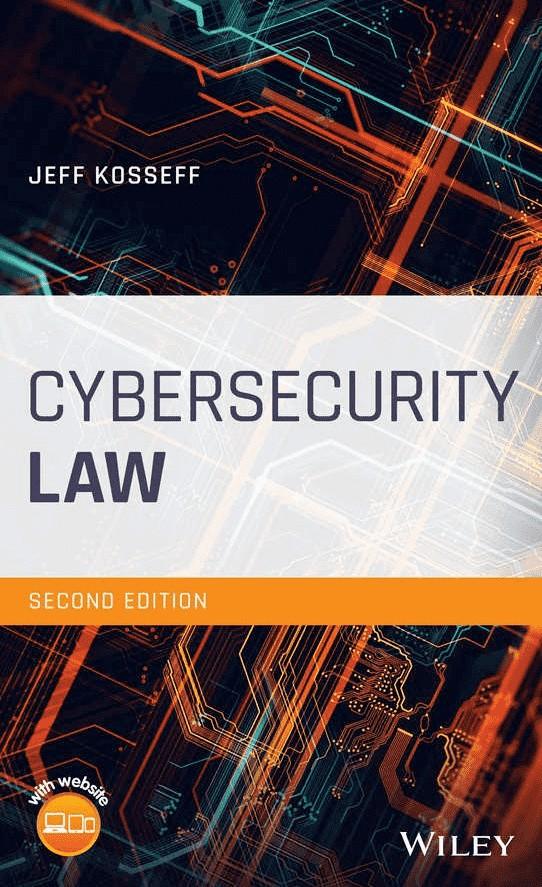Cybersecurity Law
Second Edition
Jeff Kosseff
This edition first published in 2020 © 2020 John Wiley & Sons, Inc.
Edition History
Wiley (1e, 2017)
All rights reserved. No part of this publication may be reproduced, stored in a retrieval system, or transmitted, in any form or by any means, electronic, mechanical, photocopying, recording or otherwise, except as permitted by law. Advice on how to obtain permission to reuse material from this title is available at http://www.wiley.com/go/permissions.
The right of Jeff Kosseff to be identified as the author of this work has been asserted in accordance with law.
Registered Office
John Wiley & Sons, Inc., 111 River Street, Hoboken, NJ 07030, USA
Editorial Office
111 River Street, Hoboken, NJ 07030, USA
For details of our global editorial offices, customer services, and more information about Wiley products visit us at www.wiley.com.
Wiley also publishes its books in a variety of electronic formats and by print‐on‐demand. Some content that appears in standard print versions of this book may not be available in other formats.
Limit of Liability/Disclaimer of Warranty
While the publisher and authors have used their best efforts in preparing this work, they make no representations or warranties with respect to the accuracy or completeness of the contents of this work and specifically disclaim all warranties, including without limitation any implied warranties of merchantability or fitness for a particular purpose. No warranty may be created or extended by sales representatives, written sales materials, or promotional statements for this work. The fact that an organization, website, or product is referred to in this work as a citation and/or potential source of further information does not mean that the publisher and authors endorse the information or services the organization, website, or product may provide or recommendations it may make. This work is sold with the understanding that the publisher is not engaged in rendering professional services. The advice and strategies contained herein may not be suitable for your situation. You should consult with a specialist where appropriate. Further, readers should be aware that websites listed in this work may have changed or disappeared between when this work was written and when it is read. Neither the publisher nor authors shall be liable for any loss of profit or any other commercial damages, including but not limited to special, incidental, consequential, or other damages.
Library of Congress Cataloging‐in‐Publication Data:
Names: Kosseff, Jeff, 1978- author.
Title: Cybersecurity law / Jeff Kosseff.
Description: Second edition. | Hoboken : Wiley, 2020. | Includes index.
Identifiers: LCCN 2019024454 (print) | LCCN 2019024455 (ebook) | ISBN 9781119517207 (hardback) | ISBN 9781119517290 (adobe pdf) | ISBN 9781119517320 (epub)
Subjects: LCSH: Data protection–Law and legislation–United States. | Computer security–Law and legislation–United States.
Classification: LCC KF1263.C65 K67 2020 (print) | LCC KF1263.C65 (ebook) | DDC 343.7309/99–dc23
LC record available at https://lccn.loc.gov/2019024454
LC ebook record available at https://lccn.loc.gov/2019024455
Cover image: © spainter_vfx/Shutterstock
Cover Design: Wiley
Set in 10/12pt Warnock Pro by SPi Global, Chennai, India
in the United States of America
This book is dedicated to my two biggest supporters, my wife, Crystal Zeh, and my daughter, Julia Kosseff.
Contents
About the Author xv
Acknowledgment and Disclaimers xvii Foreword to the Second Edition (2019) xix Introduction to First Edition xxiii About the Companion Website xxxi
1 Data Security Laws and Enforcement Actions 1
1.1 FTC Data Security 2
1.1.1 Overview of Section 5 of the FTC Act 2
1.1.2 Wyndham: Does the FTC Have Authority to Regulate Data Security under Section 5 of the FTC Act? 6
1.1.3 LabMD: What Constitutes “Unfair” Data Security? 10
1.1.4 FTC June 2015 Guidance on Data Security, and 2017 Updates 13
1.1.5 FTC Data Security Expectations and the NIST Cybersecurity Framework 17
1.1.6 Lessons from FTC Cybersecurity Complaints 18
1.1.6.1 Failure to Secure Highly Sensitive Information 19
1.1.6.1.1 Use Industry-Standard Encryption for Sensitive Data 19
1.1.6.1.2 Routine Audits and Penetration Testing Are Expected 20
1.1.6.1.3 Health-Related Data Requires Especially Strong Safeguards 21
1.1.6.1.4 Data Security Protection Extends to Paper Documents 22
1.1.6.1.5 Business-to-Business Providers Also Are Accountable to the FTC for Security of Sensitive Data 24
1.1.6.1.6 Companies Are Responsible for the Data Security Practices of Their Contractors 25
1.1.6.1.7 Make Sure that Every Employee Receives Regular Data Security Training for Processing Sensitive Data 26
1.1.6.1.8 Privacy Matters, Even in Data Security 26
1.1.6.1.9 Limit the Sensitive Information Provided to Third Parties 27
1.1.6.1.10 Children’s Data Requires Special Protection 27
1.1.6.2 Failure to Secure Payment Card Information 28
1.1.6.2.1 Adhere to Security Claims about Payment Card Data 28
1.1.6.2.2 Always Encrypt Payment Card Data 29
1.1.6.2.3 Payment Card Data Should Be Encrypted Both in Storage and at Rest 30
1.1.6.2.4 In-Store Purchases Pose Significant Cybersecurity Risks 31
1.1.6.2.5 Minimize Duration of Storage of Payment Card Data 33
1.1.6.2.6 Monitor Systems and Networks for Unauthorized Software 33
1.1.6.2.7 Apps Should Never Override Default App Store Security Settings 33
1.1.6.3 Failure to Adhere to Security Claims 34
1.1.6.3.1 Companies Must Address Commonly Known Security Vulnerabilities 34
1.1.6.3.2 Ensure that Security Controls Are Sufficient to Abide by Promises about Security and Privacy 35
1.1.6.3.3 Omissions about Key Security Flaws Also Can Be Misleading 38
1.1.6.3.4 Companies Must Abide by Promises for Security-Related Consent Choices 38
1.1.6.3.5 Companies that Promise Security Must Ensure Adequate Authentication Procedures 39
1.1.6.3.6 Adhere to Promises about Encryption 40
1.1.6.3.7 Promises About Security Extend to Vendors’ Practices 41
1.1.6.3.8 Companies Cannot Hide Vulnerable Software in Products 41
1.2 State Data Breach Notification Laws 42
1.2.1 When Consumer Notifications Are Required 43
1.2.1.1 Definition of Personal Information 44
1.2.1.2 Encrypted Data 45
1.2.1.3 Risk of Harm 45
1.2.1.4 Safe Harbors and Exceptions to Notice Requirement 45
1.2.2 Notice to Individuals 46
1.2.2.1 Timing of Notice 46
1.2.2.2 Form of Notice 46
1.2.2.3 Content of Notice 47
1.2.3 Notice to Regulators and Consumer Reporting Agencies 47
1.2.4 Penalties for Violating State Breach Notification Laws 48
1.3 State Data Security Laws 48
1.3.1 Oregon 50
1.3.2 Rhode Island 51
1.3.3 Nevada 51
1.3.4 Massachusetts 52
1.3.5 Ohio 55
1.4 State Data Disposal Laws 56
2 Cybersecurity Litigation 57
2.1 Article III Standing 58
2.1.1 Applicable Supreme Court Rulings on Standing 59
2.1.2 Lower Court Rulings on Standing in Data Breach Cases 64
2.1.2.1 Injury-in-Fact 64
2.1.2.1.1 Broad View of Injury-in-Fact 64
2.1.2.1.2 Narrow View of Injury-in-Fact 68
2.1.2.2 Fairly Traceable 72
2.1.2.3 Redressability 72
2.2 Common Causes of Action Arising from Data Breaches 73
2.2.1 Negligence 74
2.2.1.1 Legal Duty and Breach of Duty 75
2.2.1.2 Cognizable Injury 76
2.2.1.3 Causation 79
2.2.2 Negligent Misrepresentation or Omission 80
2.2.3 Breach of Contract 82
2.2.4 Breach of Implied Warranty 88
2.2.5 Invasion of Privacy by Publication of Private Facts 92
2.2.6 Unjust Enrichment 93
2.2.7 State Consumer Protection Laws 95
2.3 Class Action Certification in Data Breach Litigation 97
2.4 Insurance Coverage for Cybersecurity Incidents 104
2.5 Protecting Cybersecurity Work Product and Communications from Discovery 108
2.5.1 Attorney-Client Privilege 110
2.5.2 Work Product Doctrine 112
2.5.3 Nontestifying Expert Privilege 115
2.5.4 Genesco v. Visa 116
2.5.5 In re Experian Data Breach Litigation 119
2.5.6 In re Premera 120
2.5.7 In re United Shore Financial Services 121
3 Cybersecurity Requirements for Specific Industries 123
3.1 Financial Institutions: Gramm-Leach-Bliley Act Safeguards Rule 124
3.1.1 Interagency Guidelines 124
3.1.2 Securities and Exchange Commission Regulation S-P 126
3.1.3 FTC Safeguards Rule 128
3.2 New York Department of Financial Services Cybersecurity Regulations 130
3.3 Financial Institutions and Creditors: Red Flags Rule 133
3.3.1 Financial Institutions or Creditors 136
3.3.2 Covered Accounts 137
3.3.3 Requirements for a Red Flag Identity Theft Prevention Program 138
3.4 Companies that Use Payment and Debit Cards: Payment Card Industry Data Security Standard (PCI DSS) 139
3.5 California Internet of Things Cybersecurity Law 141
3.6 Health Providers: Health Insurance Portability and Accountability Act (HIPAA) Security Rule 142
3.7 Electric Transmission: Federal Energy Regulatory Commission Critical Infrastructure Protection Reliability Standards 147
3.7.1 CIP-003-6: Cybersecurity—Security Management Controls 148
3.7.2 CIP-004-6: Personnel and Training 148
3.7.3 CIP-006-6: Physical Security of Cyber Systems 149
3.7.4 CIP-007-6: Systems Security Management 149
3.7.5 CIP-009-6: Recovery Plans for Cyber Systems 149
3.7.6 CIP-010-2: Configuration Change Management and Vulnerability Assessments 150
3.7.7 CIP-011-2: Information Protection 150
3.8 Nuclear Regulatory Commission Cybersecurity Regulations 150
3.9 South Carolina Insurance Cybersecurity Law 151
4 Cybersecurity and Corporate Governance 155
4.1 Securities and Exchange Commission Cybersecurity Expectations for Publicly Traded Companies 156
4.1.1 10-K Disclosures: Risk Factors 158
4.1.2 10-K Disclosures: Management’s Discussion and Analysis of Financial Condition and Results of Operations (MD&A) 159
4.1.3 10-K Disclosures: Description of Business 160
4.1.4 10-K Disclosures: Legal Proceedings 160
4.1.5 10-K Disclosures: Financial Statements 161
4.1.6 10K Disclosures: Board Oversight of Cybersecurity 161
4.1.7 Disclosing Data Breaches to Investors 161
4.1.8 Yahoo Data Breach 164
4.1.9 Cybersecurity and Insider Trading 165
4.2 Fiduciary Duty to Shareholders and Derivative Lawsuits Arising from Data Breaches 166
4.3 Committee on Foreign Investment in the United States and Cybersecurity 168
5 Anti-Hacking Laws 171
5.1 Computer Fraud and Abuse Act 172
5.1.1 Origins of the CFAA 172
5.1.2 Access Without Authorization and Exceeding Authorized Access 173
5.1.2.1 Narrow View of “Exceeds Authorized Access” and “Without Authorization” 176
5.1.2.2 Broader View of “Exceeds Authorized Access” and “Without Authorization” 181
5.1.2.3 Attempts to Find a Middle Ground 183
5.1.3 The Seven Sections of the CFAA 184
5.1.3.1 CFAA Section (a)(1): Hacking to Commit Espionage 186
5.1.3.2 CFAA Section (a)(2): Hacking to Obtain Information 187
5.1.3.3 CFAA Section (a)(3): Hacking a Federal Government Computer 191
5.1.3.4 CFAA Section (a)(4): Hacking to Commit Fraud 192
5.1.3.5 CFAA Section (a)(5): Hacking to Damage a Computer 195
5.1.3.5.1 CFAA Section (a)(5)(A): Knowing Transmission that Intentionally Damages a Computer Without Authorization 195
5.1.3.5.2 CFAA Section (a)(5)(B): Intentional Access Without Authorization that Recklessly Causes Damage 198
5.1.3.5.3 CFAA Section (a)(5)(C): Intentional Access Without Authorization that Causes Damage and Loss 200
5.1.3.5.4 CFAA Section (a)(5): Requirements for Felony and Misdemeanor Cases 200
5.1.3.6
CFAA Section (a)(6): Trafficking in Passwords 203
5.1.3.7 CFAA Section (a)(7): Threatening to Damage or Obtain Information from a Computer 205
5.1.4 Civil Actions Under the CFAA 208
5.1.5 Criticisms of the CFAA 212
5.1.6 CFAA and Coordinated Vulnerability Disclosure Programs 214
5.2 State Computer Hacking Laws 218
5.3 Section 1201 of the Digital Millennium Copyright Act 220
5.3.1 Origins of Section 1201 of the DMCA 221
5.3.2 Three Key Provisions of Section 1201 of the DMCA 222
5.3.2.1 DMCA Section 1201(a)(1) 222
5.3.2.2 DMCA Section 1201(a)(2) 227
5.3.2.2.1 Narrow Interpretation of Section (a)(2): Chamberlain Group v. Skylink Technologies 228
5.3.2.2.2 Broad Interpretation of Section (a)(2): MDY Industries, LLC v. Blizzard Entertainment 231
5.3.2.3 DMCA Section 1201(b)(1) 236
5.3.3 Section 1201 Penalties 238
5.3.4 Section 1201 Exemptions 239
5.3.5 The First Amendment and DMCA Section 1201 246
5.4 Economic Espionage Act 250
5.4.1 Origins of the Economic Espionage Act 250
5.4.2 Criminal Prohibitions on Economic Espionage and Theft of Trade Secrets 251
5.4.2.1 Definition of “Trade Secret” 252
5.4.2.2 “Knowing” Violations of the Economic Espionage Act 255
5.4.2.3 Purpose and Intent Required under Section 1831: Economic Espionage 255
5.4.2.4 Purpose and Intent Required under Section 1832: Theft of Trade Secrets 257
5.4.3 Civil Actions for Trade Secret Misappropriation: The Defend Trade Secrets Act of 2016 260
5.4.3.1 Definition of “Misappropriation” 261
5.4.3.2 Civil Seizures 263
5.4.3.3 Injunctions 264
5.4.3.4 Damages 265
5.4.3.5 Statute of Limitations 265
5.5 Budapest Convention on Cybercrime 266
6 U.S. Government Cyber Structure and Public–Private Cybersecurity Partnerships 269
6.1 U.S. Government’s Civilian Cybersecurity Organization 269
6.2 Department of Homeland Security Information Sharing under the Cybersecurity Act of 2015 272
6.3 Critical Infrastructure Executive Order and the National Institute of Standards and Technology’s Cybersecurity Framework 276
6.4 U.S. Military Involvement in Cybersecurity and the Posse Comitatus Act 284
6.5 Vulnerabilities Equities Process 286
7 Surveillance and Cyber 291
7.1 Fourth Amendment 292
7.1.1 Was the Search or Seizure Conducted by a Government Entity or Government Agent? 293
7.1.2 Did the Search or Seizure Involve an Individual’s Reasonable Expectation of Privacy? 297
7.1.3 Did the Government Have a Warrant? 305
7.1.4 If the Government Did Not Have a Warrant, Did an Exception to the Warrant Requirement Apply? 308
7.1.5 Was the Search or Seizure Reasonable Under the Totality of the Circumstances? 310
7.2 Electronic Communications Privacy Act 311
7.2.1 Stored Communications Act 313
7.2.1.1
Section 2701: Third-Party Hacking of Stored Communications 317
7.2.1.2 Section 2702: Restrictions on Service Providers’ Ability to Disclose Stored Communications and Records to the Government and Private Parties 318
7.2.1.3 Section 2703: Government’s Ability to Require Service Providers to Turn Over Stored Communications and Customer Records 324
7.2.2 Wiretap Act 328
7.2.3 Pen Register Act 332
7.2.4 National Security Letters 334
7.3 Communications Assistance for Law Enforcement Act (CALEA) 335
7.4 Encryption and the All Writs Act 336
7.5 Encrypted Devices and the Fifth Amendment 339
8 Cybersecurity and Federal Government Contractors 343
8.1 Federal Information Security Management Act 344
8.2 NIST Information Security Controls for Government Agencies and Contractors 346
8.3 Classified Information Cybersecurity 350
8.4 Covered Defense Information and Controlled Unclassified Information 353
9 Privacy Laws 361
9.1 Section 5 of the FTC Act and Privacy 362
9.2 Health Insurance Portability and Accountability Act 366
9.3 Gramm-Leach-Bliley Act and California Financial Information Privacy Act 368
9.4 CAN-SPAM Act 369
9.5 Video Privacy Protection Act 371
9.6 Children’s Online Privacy Protection Act 372
9.7 California Online Privacy Laws 375
9.7.1 California Online Privacy Protection Act (CalOPPA) 375
9.7.2 California Shine the Light Law 376
9.7.3 California Minor “Eraser Law” 378
9.8 California Consumer Privacy Act 380
9.9 Illinois Biometric Information Privacy Act 382
10 International Cybersecurity Law 385
10.1 European Union 386
10.2 Canada 396
10.3 China 400
10.4 Mexico 405
10.5 Japan 409
11 Cyber and the Law of War 413
11.1 Was the Cyberattack a “Use of Force” that Violates International Law? 414
11.2 If the Attack Was a Use of Force, Was that Force Attributable to a State? 417
11.3 Did the Use of Force Constitute an “Armed Attack” that Entitles the Target to Self-Defense? 418
11.4 If the Use of Force Was an Armed Attack, What Types of SelfDefense Are Justified? 420
11.5 If the Nation Experiences Hostile Cyber Actions that Fall Short of Use of Force or Armed Attacks, What Options Are Available? 422
Appendix A: Text of Section 5 of the FTC Act 425
Appendix B: Summary of State Data Breach Notification Laws 433
Appendix C: Text of Section 1201 of the Digital Millennium Copyright Act 493
Appendix D: Text of the Computer Fraud and Abuse Act 505
Appendix E: Text of the Electronic Communications Privacy Act 513
Appendix F: Key Cybersecurity Court Opinions 579
Index 715
About the Author
Jeff Kosseff is an Assistant Professor of Cybersecurity Law in the Cyber Science Department at United States Naval Academy in Annapolis, Maryland. He has practiced cybersecurity and privacy law, and clerked for Judge Milan D. Smith, Jr. of the U.S. Court of Appeals for the Ninth Circuit and for Judge Leonie M. Brinkema of the U.S. District Court for the Eastern District of Virginia. Mr. Kosseff is a graduate of Georgetown University Law Center and the University of Michigan. Before becoming a lawyer, he was a journalist for The Oregonian and was a finalist for the Pulitzer Prize for national reporting.
Acknowledgment and Disclaimers
First and foremost, I’d like to thank my colleagues at the United States Naval Academy, and the hundreds of midshipmen whom I have taught in the Academy’s cyber operations major. My daily discussions and debates with them have shaped how I think about the emerging field of cybersecurity law, and working with them every day is an inspiration.
Thanks to Wiley for seeing the need for a book that examines the many areas of the law that are related to the evolving world of cybersecurity.
I’d also like to thank the many people who have provided feedback, particularly as I have substantially revised the second edition of the book. They include Marc Blitz, Matt Bodman, Amit Elazari Bar On, Ashden Fein, Eric Goldman, Ido Kilovaty, Kurt Sanger, and Armin Tadayon. Special thanks to Brooke Graves for outstanding editing. Thanks to Liz Seif for excellent proofreading.
Any views expressed in this book are only my own, and do not represent the Naval Academy, Department of Navy, or Department of Defense. In this book, I present legal conclusions and facts as stated in judicial opinions and other court documents. By doing so, I am not necessarily endorsing those conclusions or factual claims.
This book is intended as a textbook and casebook for classes at the undergraduate, graduate, and law school levels, as well as a desk reference. However, due to the rapidly changing nature of cybersecurity law, this is not a substitute for legal advice or research on the current state of the law.
Foreword to the Second Edition (2019)
In the two years since the publication of the first edition of this book in early 2017, much has changed in the world of cybersecurity law. Legislators at the state, federal, and international levels enacted sweeping new laws to address cybersecurity. Courts issued significant new opinions in just about every area covered by the first edition. The U.S. government reorganized its civilian cybersecurity efforts amid unprecedented challenges.
I wrote the second edition to incorporate these new developments, and to make this book even more useful both in the classroom and in the workplace. Before I provide an overview of the changes to particular content, I’d like to highlight three significant additions to the book:
First, the book adds Appendix F, which includes 15 edited court opinions that cover the range of legal issues discussed in the text. I’ve been pleased to observe the number of professors in undergraduate, graduate, and law school programs who have assigned the book as a primary text. Some professors— particularly at the law school level—incorporate the case method into their teaching, in which their students learn about the legal rules by reading important statutes and court opinions and discussing them in class. Although the appendices to the first edition contained the text of some of the leading cybersecurity‐related statutes, the first edition did not include the text of court opinions. Appendix F provides edited opinions that cover FTC data security authority, private data breach litigation, shareholder derivative data breach litigation, the Computer Fraud and Abuse Act, and the Fourth Amendment. By combining these edited cases with the narrative text, I hope that the book will be useful as both a traditional textbook and a casebook. The edited court opinions also will be useful to those using the book as a treatise, as it provides a more detailed look at some of the cases discussed in the main text.
Second, the new edition adds Chapter 11, which covers some aspects of the international law of cyberwarfare. As we have seen in the past few years, many cybersecurity threats have originated from state actors in other nations. This requires us to examine, under international law, what options a target country has to defend itself.
Third, Wiley offers a new, instructor‐only website, which has suggested questions for class discussion, and model exam questions.
In addition to these three significant structural additions, the second edition adds new sections and substantively updates existing sections to incorporate the many new developments in cybersecurity law in the past few years. Among some of the additions and changes:
● Chapter 1 adds new FTC data security enforcement actions, and the outcome of the LabMD litigation that challenged the FTC’s data security enforcement authority. It also updates FTC guidance on data security practices, and new state data security laws. Since the first edition, Alabama, New Mexico, and South Dakota became the last of the 50 states to adopt data breach notification laws, and many states expanded their breach notice requirements. The new edition adds and updates the breach notification statute, and Appendix B summarizes all of these notification laws.
● Chapter 2 incorporates many new court rulings on Article III standing in private data breach litigation, common claims in data breach lawsuits, and the attorney‐client privilege in cybersecurity litigation.
● Chapter 3 includes a new section on the New York Department of Financial Service’s recently enacted cybersecurity regulations, which are among the most rigorous in the United States and affect a wide range of companies. It also adds sections on South Carolina’s new cybersecurity requirements for insurance companies, and California’s new Internet of Things cybersecurity law.
● Chapter 4 discusses cybersecurity guidance for publicly traded companies that the Securities and Exchange Commission released in 2018, as well as the SEC’s settlement with Yahoo over a massive data breach.
● Chapter 5 adds a number of new Computer Fraud and Abuse Act cases, including the Ninth Circuit’s second ruling in the landmark United States v. Nosal. It also includes new sections on bug bounty/vulnerability disclosure programs and the Budapest Convention on Cybercrime.
● Chapter 6 describes the Department of Homeland Security’s reorganization of its cybersecurity program, as well as the allocation of cybersecurity duties among federal departments under Presidential Policy Directive 41. It includes a new section about the November 2017 announcement of the federal government’s vulnerability equities process.
● Chapter 7 updates developments in Fourth Amendment caselaw, most notably the Supreme Court’s 2018 opinion in Carpenter v. United States. The chapter also includes a new section on cases in which criminal suspects or defendants have claimed a Fifth Amendment self‐incrimination privilege to challenge orders requiring them to assist law enforcement with accessing encrypted devices and computers. It also describes the Clarifying Lawful Overseas Use of Data (CLOUD) Act, which sets new rules for extraterritorial enforcement of Stored Communications Act orders.
● Chapter 8 updates the cybersecurity requirements for federal government contractors, most notably the recently enacted regulations for the security of controlled unclassified information.
● Chapter 9 examines the California Consumer Privacy Act, an extensive series of data protection rules enacted in 2018 and effective in 2020.
● Chapter 10 expands the discussion of the European Union’s General Data Protection Regulation, and examines China’s new comprehensive cybersecurity law.
Introduction to First Edition
In recent years, cybersecurity has become not only a rapidly growing industry, but an increasingly vital consideration for nearly every company and government agency in the United States. A data breach can lead to high‐stakes lawsuits, significant business disruptions, intellectual property theft, and national security vulnerabilities. Just ask any executive from Sony, Target, Home Depot, or the scores of other companies that experienced costly data breaches or the top officials at the U.S. Office of Personnel Management, which suffered a breach that exposed millions of federal workers’ highly confidential security clearance applications. In short, it is abundantly clear that companies, governments, and individuals need to do more to improve cybersecurity.
Many articles and books have been written about the technical steps that are necessary to improve cybersecurity. However, there is much less material available about the legal rules that require—and, in some cases, restrict—specific cybersecurity measures. Legal obligations and restrictions should be considered at the outset of any cybersecurity strategy, just as a company would consider reputational harm and budgetary issues. Failure to comply with the law could lead to significant financial harms, negative publicity, and, in some cases, criminal charges.
Unfortunately, the United States does not have a single “cybersecurity law” that can easily apply to all circumstances. Rather, the United States has a patchwork of hundreds of state and federal statutes, regulations, binding guidelines, and court‐created rules regarding data security, privacy, and other issues commonly considered to fall under the umbrella of “cybersecurity.” On top of that, if U.S. companies have customers or employees in other countries, they must consider the privacy and data security laws and regulations of those nations. This book aims to synthesize the cybersecurity laws that are most likely to affect U.S. corporate and government operations. The book is intended for a wide range of audiences that seek to learn more about cybersecurity law: undergraduate, graduate, and law school students; technology professionals; corporate executives; and lawyers. For lawyers who use this book as a reference treatise, this book contains detailed footnotes to the primary source materials,
such as statutes and case citations. However, this book is not intended only for those with law degrees; it is written with the intent of being a guide for lawyers and nonlawyers alike. Similarly, in addition to being a desk reference, this book can be used as a primary or supplemental text in a cybersecurity law class.
The book focuses on the cybersecurity obligations of U.S. companies, but because cyberspace involves global private and public infrastructure, the book does not focus only on U.S. legal obligations of private companies. The book examines the efforts of the public sector and private sector to work together on cybersecurity, as well as the limits on government cyber operations under the U.S. Constitution and various statutes. Moreover, the book discusses some of the foreign cybersecurity laws that U.S. companies are most likely to encounter.
At the outset, it is important to define the term “cybersecurity law.” Unlike more established legal fields, such as copyright, contracts, and torts, cybersecurity law is relatively new and not clearly defined. Indeed, some people think of cybersecurity law as consisting only of data security requirements for companies that are designed to reduce the likelihood of data breaches. Others think of cybersecurity law as anti‐hacking laws. And to some, cybersecurity law is a subset of privacy law.
To all of those suggestions, I say “yes.” Cybersecurity encompasses all of those subjects and more. The U.S. Department of Homeland Security’s National Initiative for Cybersecurity Careers and Studies defines cybersecurity as “[t]he activity or process, ability or capability, or state whereby information and communications systems and the information contained therein are protected from and/or defended against damage, unauthorized use or modification, or exploitation.” This definition is a good—and largely complete—starting point for the purposes of this book. The DHS definition captures the “CIA Triad”—confidentiality, integrity, and availability—that typically is associated with cybersecurity. Under this definition, we should be concerned with data security laws, data breach litigation, and anti‐hacking laws. However, I have two additions to the DHS definition. First, it is impossible to fully evaluate cybersecurity without understanding the limits on the government’s ability to conduct electronic surveillances. Accordingly, the Fourth Amendment to the U.S. Constitution and statutes that restrict government surveillance must be considered as part of an examination of cybersecurity law. Second, cybersecurity law is heavily intertwined with privacy law, which restricts the ability of companies and governments to collect, use, and disclose individuals’ personal information.
To simplify, this book categorizes cybersecurity law as consisting of six broad areas of law:
● Private sector data security laws
● Anti‐hacking laws
● Public–private cybersecurity efforts
● Government surveillance laws
● Cybersecurity requirements for government contractors
● Privacy law
Private Sector Data Security Laws (Chapters 1–4)
Among the most complex—and rapidly changing—areas of cybersecurity are the many requirements that apply to U.S. companies’ handling of customers’ and employees’ personal data. A number of state and federal laws require companies to implement specific data security safeguards, and if a company faces a data breach, it may be required to notify customers, regulators, and credit bureaus. Breaches also could expose companies to costly regulatory actions and class action lawsuits.
Chapter 1 provides an overview of the state and federal laws that generally apply to data security and data breaches. Unlike other nations, the United States does not have a general law that imposes specific privacy and data security requirements on all companies. The closest analogue in the United States is Section 5 of the Federal Trade Commission Act, which prohibits unfair and deceptive trade practices. Chapter 1 examines dozens of complaints that the Federal Trade Commission has filed under this statute arising from allegedly inadequate data security. The chapter next examines the laws in nearly every state that require companies to notify regulators, customers, and credit bureaus of data breaches in certain circumstances. Finally, the chapter examines the dozen state laws that impose specific data security requirements for personal information.
Chapter 2 examines the various types of private class action lawsuits that companies could face after they experience data breaches. First, the chapter examines a concept known as Article III standing, which is among the most significant barriers to plaintiffs’ lawsuits arising from data breaches. In short, Article III standing requires that plaintiffs demonstrate that they suffered an injury‐in‐fact that is fairly traceable to the defendant’s conduct and redressable by a lawsuit. Courts are divided as to what types of injuries a data breach plaintiff must demonstrate to have Article III standing. The chapter then reviews common legal claims that arise from data breaches, including negligence, misrepresentation, breach of contract, invasion of privacy, unjust enrichment, and state consumer protection laws. The chapter also reviews the procedural requirements that data breach plaintiffs must satisfy to be permitted to sue on behalf of a larger class of plaintiffs. It examines whether commercial insurance coverage helps cover companies’ liability in data breach lawsuits. Finally, the chapter examines how companies can reduce the likelihood that their internal
cybersecurity communications and reports will be subject to discovery and used against them in litigation.
Chapter 3 examines the additional data security requirements that U.S. companies face if they handle particularly sensitive personal information. The Gramm‐Leach‐Bliley Act requires financial institutions to adopt specific security safeguards for customers’ nonpublic financial information. The Payment Card Industry Data Security Standard contractually imposes data security safeguards for companies that handle credit and debit card information. Doctors, health insurers, and other healthcare companies and their business associates face stringent data security requirements under the Health Insurance Portability and Accountability Act. Finally, the chapter examines the cybersecurity requirements for electric utilities and nuclear licensees.
Chapter 4 provides an overview of data security requirements that affect corporations. The Securities and Exchange Commission expects publicly traded companies to disclose material risks, and in recent years, it has urged companies to be transparent about their cybersecurity vulnerabilities and explain how those vulnerabilities might affect shareholders. This chapter examines the level of disclosure that the SEC expects in publicly traded companies’ public filings, and provides examples of various levels of transparency and disclosure. The chapter also examines the possibility of shareholders suing executives and directors if the company experiences a costly data breach. Next, the chapter explores the cybersecurity expectations of the Committee on Foreign Investment in the United States, which must approve any foreign investments in U.S. companies. Finally, the chapter examines how the ongoing debate over corporate export controls could make it more difficult for U.S. companies to conduct cybersecurity research.
Anti‐Hacking Laws (Chapter 5)
Anti‐hacking laws—notably the federal Computer Fraud and Abuse Act (CFAA)—are intended to help promote cybersecurity. However, some critics argue that these laws are outdated and not only fail to help protect private and government computers but also penalize individuals for conducting entirely legitimate activities, such as cybersecurity research.
Chapter 5 reviews the seven offenses that are prohibited by the CFAA, such as hacking computers to obtain information and damaging computers. The CFAA applies to activities that are conducted “without authorization” or “exceed[ing] authorized access,” and the chapter examines how different courts have applied these rather ambiguous terms. The chapter briefly reviews state hacking laws that are based on the CFAA. The chapter then examines Section 1201 of the Digital Millennium Copyright Act, which restricts the ability of individuals to circumvent access controls that protect copyrighted
material, and therefore imposes significant limits on cybersecurity vulnerability research. Finally, the chapter examines the Economic Espionage Act, a criminal law that companies increasingly see as a tool to penalize individuals that steal trade secrets. In 2016, Congress amended the Economic Espionage Act to allow companies to file civil lawsuits against hackers and others who steal trade secrets.
Public–Private Security Efforts (Chapter 6)
Cybersecurity law often is associated with punitive measures, such as FTC investigations and data breach class action lawsuits. While those considerations surely are an important component of cybersecurity law, the federal government also has taken a number of proactive steps to work with companies to improve cybersecurity throughout the public and private sectors. Such collaboration is particularly necessary and common in cybersecurity because public and private cyber infrastructure often is interconnected.
Chapter 6 provides an overview of the organization of the federal government’s cybersecurity efforts, with the Department of Homeland Security taking an increasingly large and central role in the government’s collaboration with the private sector. The chapter examines private–public information sharing, which likely will expand due to the Cybersecurity Act of 2015. The chapter examines the National Institute of Standards and Technology’s 2014 cybersecurity framework, which many companies voluntarily adopt as the basis of their own cybersecurity plans. Finally, the chapter briefly examines the U.S. military’s involvement with private sector cybersecurity, and the limits imposed by the Posse Comitatus Act.
Government Surveillance Laws (Chapter 7)
Government surveillance laws often restrict the government’s ability to increase the security of cyberspace. By “security,” what is meant is more than merely preventing the transmission of malware and other harmful programs. Security also encompasses government efforts to fight cybercrime, such as child pornography, terrorist recruitment, and other harmful online activities. The government—and, in some cases, the private sector—often is restricted by constitutional provisions and statutes.
Chapter 7 begins with an examination of how the Fourth Amendment’s prohibition on unreasonable searches and seizures applies to electronic surveillance. The chapter then examines the Electronic Communications Privacy Act, a comprehensive statute that limits the ability of the government to obtain stored communications, use wiretaps to obtain data in transit, and obtain
metadata via pen registers. The chapter further examines the government’s ability to issue National Security Letters to obtain certain information regarding electronic communications, and the obligations of communications companies to assist law enforcement under the Communications Assistance for Law Enforcement Act. The chapter concludes with an examination of law enforcement’s attempts, using the All Writs Act, to compel technology companies to help them access encrypted communications.
Cybersecurity Requirements for Government Contractors (Chapter 8)
Many small and large companies rely on the federal government as a significant client for a wide range of products and services. Increasingly, the federal government is expecting these companies to implement specific standards for cybersecurity.
Chapter 8 examines the key cybersecurity requirements for U.S. government contractors. First, the chapter examines the Federal Information Security Management Act (FISMA), the primary statute that governs data security for the federal government and its contractors. The chapter next provides an overview of the information security controls that the National Institute of Standards and Technology has developed for government agencies and their contractors as part of FISMA. The chapter then examines specific cybersecurity requirements for government contractors that handle classified information, controlled unclassified information, and covered defense information.
Privacy Law (Chapter 9)
Any examination of cybersecurity law would be incomplete without an overview of privacy law. Privacy law restricts the ability of companies to use, share, collect, and retain personal information. While data security laws traditionally focus on the measures that companies take to prevent unauthorized access to information, privacy laws restrict the ability of companies to voluntarily use or disclose customers’ personal information. Privacy law should be considered alongside data security and other cybersecurity laws because they form a company’s overall approach to handling personal information. Moreover, a company’s statements about its data security in its privacy policy can lead to significant liability under various privacy laws.
Chapter 9 begins with an overview of the FTC’s approach to privacy regulation. As with data security, the FTC uses Section 5 of the Federal Trade Commission Act to bring complaints against companies that violate their consumers’ privacy rights or fail to meet the guarantees of their privacy policies.
The chapter then examines the privacy laws that restrict healthcare providers and insurers and financial institutions. The chapter describes the CAN‐SPAM Act, which limits the ability of companies to send email marketing materials. It explores the Video Privacy Protection Act, which restricts the ability of companies to share online and offline video viewing information, and the Children’s Online Privacy Protection Act, which limits the collection of information from children under 13 years old. Finally, the chapter examines state laws in California and Illinois that require website privacy policies, require the deletion of certain information provided by minors, and restrict the use of biometric information, including facial recognition.
Chapters 1 through 9 therefore focus primarily on the U.S. federal and state cybersecurity laws that bind U.S. companies. However, very few U.S. companies can operate without considering the cybersecurity requirements of other countries. If the companies have employees, customers, or business partners in other countries, they may also be bound by those countries’ cybersecurity laws. And many countries—particularly those in the European Union—have enacted privacy and data security laws that are much more restrictive than those in the United States. For that reason, Chapter 10 examines the primary privacy and data security legal requirements of the five largest trading partners of the United States: the European Union, Canada, Mexico, China, and Japan.
As with all emerging areas of the law, cybersecurity law is rapidly evolving. At any time, legislatures, regulators, and courts may change some of the laws that are described in this book. Accordingly, this book is not intended to be a substitute for legal advice from qualified counsel.
Cybersecurity law is a complex, nascent, and rapidly changing field. As we continue to define and build this exciting new area of law, this book attempts to provide a reference for students, lawyers, information technology professionals, and others who are interested in helping companies and government agencies improve the security of their computers, systems, and networks.
Data Security Laws and Enforcement Actions
The United States does not have a national law that explicitly prescribes specific data security standards for all industries. The only explicit federal data security laws apply to companies that handle specific types of data, such as financial information or health records (discussed in Chapter 3). This comes as a surprise to many, and is frustrating to businesses that want to assure customers and regulators that they comply with all legal requirements, particularly for securing customers’ personal information. Likewise, consumer advocates and privacy groups criticize the federal government for failing to enact data security requirements. In recent years, members of Congress and the White House have introduced legislation to set minimum data security standards, but, as of publication of this book, Congress has not enacted any such legislation.
Despite the lack of a statute that sets minimum data security requirements, the Federal Trade Commission (FTC) aggressively polices data security. In recent years, the FTC has brought dozens of enforcement actions against companies that it believes have failed to take reasonable steps to secure the personal data of their customers. The FTC brings these actions under Section 5 of the FTC Act, a century-old law that was designed to protect consumers and competitors from unfair or deceptive business practices. Although the law does not explicitly address cybersecurity, it is one of the primary tools that the government uses to bring enforcement actions against companies that failed to take adequate steps to protect consumer information.
This chapter provides an overview of data security requirements under Section 5 of the FTC Act, as well as under state data security laws and private tort claims.
First, we examine what the FTC considers to constitute “unfair” or “deceptive” trade practices that violate Section 5. Next, we pay special attention to challenges to the FTC’s cybersecurity authority. These challenges have been
Cybersecurity Law, Second Edition. Jeff Kosseff.
© 2020 John Wiley & Sons, Inc. Published 2020 by John Wiley & Sons, Inc.
Companion Website: www.wiley.com/go/kosseff/cybersecurity2e
raised by two companies, Wyndham Worldwide Resorts and LabMD, and we conclude that, for now, it is largely accepted that the FTC has some authority to bring Section 5 complaints against companies that fail to adequately secure customer data, though judges may impose some limits on this authority. We then review how the FTC has applied that reasoning to cybersecurity, both in guidance and the dozens of complaints that it has filed against companies that allegedly failed to adequately secure personal information.
After reviewing the FTC’s data security guidance and enforcement actions, we review the laws of 50 states and the District of Columbia that require companies to notify individuals, regulators, and credit bureaus after certain types of personal information are disclosed in a data breach. These laws are fairly complex, and the notification requirements vary by state. Failure to comply with the requirements in each of these statutes could lead to significant regulatory penalties and, in some cases, private lawsuits.
This chapter also provides an overview of the state laws that require companies to implement reasonable data security programs and policies, and the state laws that require companies to securely dispose of personal information.
1.1 FTC Data Security
The FTC is the closest thing that the U.S. federal government has to a centralized data security regulator. Many other agencies—including the Department of Health and Human Services, Education Department, and Federal Communications Commission—have jurisdiction to regulate privacy and data security for particular sectors. However, only the FTC has the authority to regulate companies in a wide range of sectors, provided that they engage in interstate commerce.
1.1.1 Overview of Section 5 of the FTC Act
The FTC claims its data security authority under Section 5 of the Federal Trade Commission Act,1 which declares illegal “unfair or deceptive acts or practices in or affecting commerce.”2 The statute does not explicitly mention data security.
In 1983, the FTC released a policy statement that elaborates on the elements necessary for it to bring a case against a company for violating the “deception”
1 For the full text of § 5, see app. A.
2 15 U.S.C. § 45(a)(1).
prong of Section 5. These factors are general and not unique to data security actions:
First, there must be a representation, omission or practice that is likely to mislead the consumer. Practices that have been found misleading or deceptive in specific cases include false oral or written representations, misleading price claims, sales of hazardous or systematically defective products or services without adequate disclosures, failure to disclose information regarding pyramid sales, use of bait and switch techniques, failure to perform promised services, and failure to meet warranty obligations.
Second, we examine the practice from the perspective of a consumer acting reasonably in the circumstances. If the representation or practice affects or is directed primarily to a particular group, the Commission examines reasonableness from the perspective of that group.
Third, the representation, omission, or practice must be a “material” one. The basic question is whether the act or practice is likely to affect the consumer’s conduct or decision with regard to a product or service. If so, the practice is material, and consumer injury is likely, because consumers are likely to have chosen differently but for the deception. In many instances, materiality, and hence injury, can be presumed from the nature of the practice. In other instances, evidence of materiality may be necessary.3
The FTC will bring data security-related claims against companies under the “deception” prong if they have misrepresented their security practices.4 For instance, if a company were to state in its privacy policy that “we guarantee absolute security of your data and we promise we will never have a data breach,” and that company subsequently experienced a breach, the FTC might assert that the privacy policy was deceptive.
The FTC also has increasingly claimed authority for data security enforcement actions under the “unfairness” prong of Section 5.5 Throughout the 1960s and 1970s, the FTC was criticized for arbitrarily issuing unfairness rulings when determining whether a practice is unfair. The Commission considered:
(1) whether the practice, without necessarily having been previously considered unlawful, offends public policy as it has been
3 FTC Policy Statement on Deception (Oct. 14, 1983).
4 See, e.g., Complaint at 3–5, In re Upromise, FTC File No. 102-3116, No. C-4351, 2012 WL 1225058 (F.T.C. Mar. 27, 2012).
5 For additional history of the FTC’s “unfairness” authority under Section 5, see part I.A. of FTC v. Wyndham, 799 F.3d 236 (3d Cir. 2015), in app. F of this book.
established by statutes, the common law, or otherwise—whether, in other words, it is within at least the penumbra of some common-law, statutory, or other established concept of unfairness; (2) whether it is immoral, unethical, oppressive, or unscrupulous; (3) whether it causes substantial injury to consumers (or competitors or other businessmen).6
This three-part test became known as the Cigarette Rule because the Commission articulated the rule as it was considering how to regulate cigarette advertising. Although the FTC did not frequently use this authority, the United States Supreme Court quoted it in 1972, describing the three prongs as “the factors [the FTC] considers in determining whether a practice that is neither in violation of the antitrust laws nor deceptive is nonetheless unfair.”7
The FTC recognized the need to clarify the Cigarette Rule to focus more specifically on the injury to customers and benefits to society, rather than judgments about whether the practice “offends public policy,” is immoral, or is unscrupulous. In 1980, the Commission issued the Unfairness Policy Statement, which the Commission claimed provides a “more detailed sense of both the definition and the limits of these criteria.”8 The statement articulates a threepart test for unfairness claims: (1) “the injury must be substantial,” (2) “the injury must not be outweighed by any offsetting consumer or competitive benefits that the sales practice also produces,” and (3) “the injury must be one which consumers could not reasonably have avoided.”9
In 1994, Congress amended the FTC Act to codify the 1980 Unfairness Policy Statement into law, becoming Section 5(n) of the FTC Act. The statute states that “unfair” practices are those that cause or are likely to cause “substantial injury to consumers which is not reasonably avoidable by consumers themselves and not outweighed by countervailing benefits to consumers or to competition.”10 This causes the FTC (and courts) to apply the three-part test of the 1980 Unfairness Policy Statement:
First, has the trade practice caused or is likely to cause substantial injury to customers? In other words, a minor injury will not constitute an unfair trade practice. The FTC has stated that a substantial injury often “involves monetary harm, as when sellers coerce consumers into purchasing unwanted goods or services or when consumers buy defective goods or services on credit but are unable to assert against the creditor claims or defenses arising from the
6 Unfair or Deceptive Advertising and Labeling of Cigarettes in Relation to the Health Hazards of Smoking, 16 C.F.R. 408, 29 Fed. Reg. 8344 (July 2, 1964).
7 FTC v. Sperry & Hutchinson Co., 405 U.S. 233 (1972).
8 FTC Policy Statement on Unfairness, Appended to International Harvester Co., 104 F.T.C. 949, 1070 (1984) [hereinafter FTC Unfairness Policy Statement].
9 Id.
10 15 U.S.C. § 45(n).

